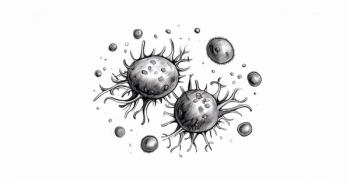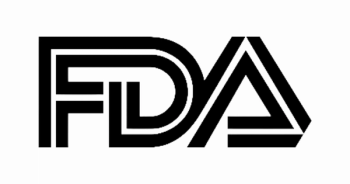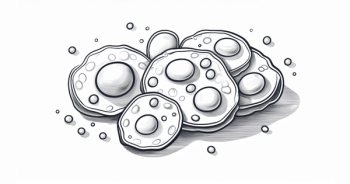
Peers & Perspectives in Oncology
- July 2025
Newer Trials Explore High-Risk Treatment and MRD in Multiple Myeloma
During a live event, Kathleen A. Dorritie, MD, discussed updated outcomes from the IsKia, MASTER, and CONCEPT clinical trials of frontline therapy in multiple myeloma.
In this
Targeted OncologyTM: What did the phase 3 IsKia trial (NCT04483739) show about triplet vs quadruplet regimens in newly diagnosed multiple myeloma?
Kathleen Dorritie, MD: This study was looking at…isatuximab [Sarclisa], a CD38 monoclonal antibody, and this was in combination with carfilzomib [Kyprolis]. These were transplant eligible patients, a younger group aged less than 70, who were newly diagnosed patients. These patients were stratified based on fluorescence in situ hybridization testing. Patients all got 4 induction cycles of either KRd [carfilzomib, lenalidomide (Revlimid), and dexamethasone] or Isa-KRd [isatuximab plus KRd]. They did MRD [minimal residual disease] testing by next-generation sequencing on the bone marrow at several time points throughout: before transplant, after transplant, before consolidation, etc. This was a heavy-duty regimen, if you will. After transplant, patients went on to get 4 additional cycles of their assigned induction regimen. Then they went on to a lighter version of consolidation where they had less carfilzomib.
In both arms, MRD negativity was higher in the arm containing isatuximab, both at the 10-5 and 10-6 levels.1 Looking at the different subgroup analysis, by and large they favored Isa-KRd. This shows that in the Isa-KRd group in general seemed to achieve higher degree of MRD negativity as well. It didn't use MRD to guide transplant, but it did use MRD after transplant.
Could you describe the design and outcomes of the phase 2 MASTER study (NCT03224507)?
This was a study looking at high-risk patients specifically. They enriched for high-risk cytogenetics. These were newly diagnosed patients, and this was a Dara-KRd [daratumumab (Darzalex) plus KRd] study because these were patients with high risk and at the time, a lot of people were using KRd as their preferential triplet. Patients got 4 cycles of induction, then they had their transplant and…when patients achieved MRD negativity, they could go off treatment and be observed. We don't have all the data from this study yet, but this is showing that patients who had higher-risk disease, patients who had 2 or more high-risk cytogenetic abnormalities, did more poorly.2 I don't think the progression-free survival and overall survival [benefit] is surprising to anybody. Similarly, patients who achieved MRD negativity did better. We get a lot of questions about, if you use daratumumab up front, then what are you going to do at relapse? But I think the message is that the most important thing is achieving MRD negativity. You shouldn't be thinking about not having your next choice. You should be using it up front.
We don't have all of the data yet from this study. Most patients did achieve MRD negativity by the end of consolidation, so a fair number of them could come off their treatment. That is the other big thing in myeloma. A lot of the studies suggested we should be treating until progression, which is not appetizing for patients. If we can use MRD as a way to determine who can come off and have a treatment-free period, similar to what we're starting to think about in diseases like chronic lymphocytic leukemia, that would be ideal.
What other data are there on using MRD negativity in this setting?
There was a study in Germany, the GMMG-CONCEPT study [NCT03104842]. This had a different design. This was looking at patients who were transplant preferred [in Arm A] and patients who were not transplant preferred in Arm B. These were high-risk patients. This was induction with Isa-KRd. In the transplant arm, they went on to have their transplant. In the other arm they had 2 cycles of Isa-KRd, and then [both arms received] consolidation and maintenance. There were adjustments in the maintenance in terms of the intensity of the drugs, but in general, these patients were continued until progressive disease or toxicity.
This study showed that in the patients who did have a transplant, at end of consolidation they had higher rates of complete response compared with the patients who didn't have transplant.3 The MRD negativity was higher in the patients who had the transplant vs no transplant. This is similar to the DETERMINATION study [NCT01208662]. It's showing that we think that transplant does add benefit in the current time. Although this was a quadruplet study, we do think transplant may add benefit in terms of MRD negativity as well. But I think we need more studies, a larger patient sample, because this is a small number of patients, which is why studies like DETERMINATION-2 to need to be run.
Where is the field headed in terms of quadruplet therapy?
I think most of us now up front are using Dara-VRd [daratumumab, bortezomib (Velcade), lenalidomide, and dexamethasone]; Isa-KRd is certainly a great option in high-risk patients. We have good data for doing that. We'll talk about Isa-containing regimens a little bit later on, even in the transplant ineligible setting. We've already talked a little bit about how MRD testing we think will change practice. I think ultimately, we'll be using MRD negativity as a way to guide the intensity of therapy and how we can back down on therapy, similar to what we've done in other diseases.
What is recommended currently as maintenance after frontline therapy?
In terms of maintenance, the category 1 recommendation is still for lenalidomide.4 But you can also consider using carfilzomib/lenalidomide or daratumumab/lenalidomide, and in certain circumstances. bortezomib plus/minus lenalidomide. Before we had more daratumumab data, for higher-risk patients I was using a lot of proteasome inhibitor maintenance, which I think is still certainly reasonable. I think that now more and more I'm seeing people use daratumumab plus/minus lenalidomide maintenance, partly because bortezomib is not the greatest drug. A lot of people get neuropathy, and daratumumab is very well tolerated. In the maintenance setting, you only have to give it monthly, so it's a lot easier for patients. A lot of times, I find that it's the lenalidomide that is problematic for patients. It’s good that we have different options.
DISCLOSURE: Dorritie previously disclosed research support from Kite Pharma-Gilead, Janssen, Bristol Myers Squibb, Genmab, Hoffman-LaRoche, and an advisory board member role for Janssen.








































